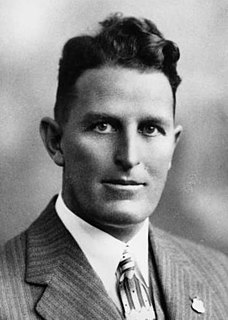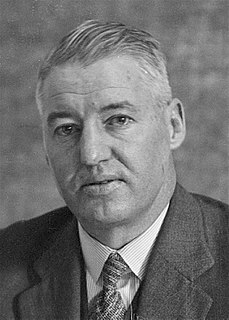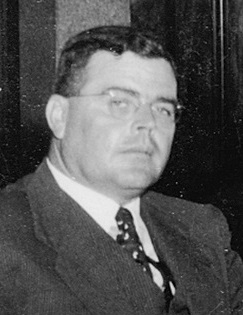| |||||||||||||||||||||||||||||||
All 72 seats in the Legislative Assembly of Queensland 37 Assembly seats were needed for a majority | |||||||||||||||||||||||||||||||
|---|---|---|---|---|---|---|---|---|---|---|---|---|---|---|---|---|---|---|---|---|---|---|---|---|---|---|---|---|---|---|---|
| |||||||||||||||||||||||||||||||
| |||||||||||||||||||||||||||||||
Elections were held in the Australian state of Queensland on 22 May 1915 to elect the 72 members of the state's Legislative Assembly.

Australia, officially the Commonwealth of Australia, is a sovereign country comprising the mainland of the Australian continent, the island of Tasmania and numerous smaller islands. It is the largest country in Oceania and the world's sixth-largest country by total area. The neighbouring countries are Papua New Guinea, Indonesia and East Timor to the north; the Solomon Islands and Vanuatu to the north-east; and New Zealand to the south-east. The population of 25 million is highly urbanised and heavily concentrated on the eastern seaboard. Australia's capital is Canberra, and its largest city is Sydney. The country's other major metropolitan areas are Melbourne, Brisbane, Perth and Adelaide.

The states and territories are the first-level administrative divisions of the Commonwealth of Australia. They are the second level of government in Australia, located between the federal and local government tiers.

Queensland is the second-largest and third-most populous state in the Commonwealth of Australia. Situated in the north-east of the country, it is bordered by the Northern Territory, South Australia and New South Wales to the west, south-west and south respectively. To the east, Queensland is bordered by the Coral Sea and Pacific Ocean. To its north is the Torres Strait, with Papua New Guinea located less than 200 km across it from the mainland. The state is the world's sixth-largest sub-national entity, with an area of 1,852,642 square kilometres (715,309 sq mi).
Contents
The election was the second for the Liberal government of Digby Denham, who had been premier since 7 February 1911. The opposition Labor Party, led by T. J. Ryan, had two previous Premiers — Anderson Dawson in 1899 and William Kidston in 1906 — but the former did not command a majority of parliamentary support, while the latter maintained it by splitting the Labor Party. Labor had never before held majority government.
The Liberal Party was a political party in the Australian state of Queensland in the early 20th century. It combined the main non-Labor forces, the "Kidstonites" of William Kidston and the Conservatives of Robert Philp, similar to the federal Commonwealth Liberal Party whose fusion it preceded. The Liberals held government from their formation in 1908 until defeat in 1915 after which they combined with other elements in the state to form the National Party.

Digby Frank Denham was politician and businessman in Queensland, Australia. He was a Premier of Queensland and Member of the Queensland Legislative Assembly. He was the first of only two Queensland Premiers to lose their own seat at a general election.

The Premier of Queensland is the head of government in the Australian state of Queensland.
The election was the first in Australia to be conducted using compulsory voting due to Denham's concern that Trade Unions were effectively mobilising the ALP vote; he felt that compulsory voting would ensure a more level playing field. However, it turned out that the change to compulsory voting was not enough to save Denham's premiership. [1]

Compulsory voting is an effect of laws which require eligible citizens to register and vote in elections, and may impose penalties on those who fail to do so. As of August 2013, 22 countries provide for compulsory voting, and 11 democracies — about 5% of all United Nations members — enforce it.
The election resulted in the defeat of the government, and Queensland's first majority Labor government. All except two members of the Ministry up for election, including Denham himself, lost their seats.










